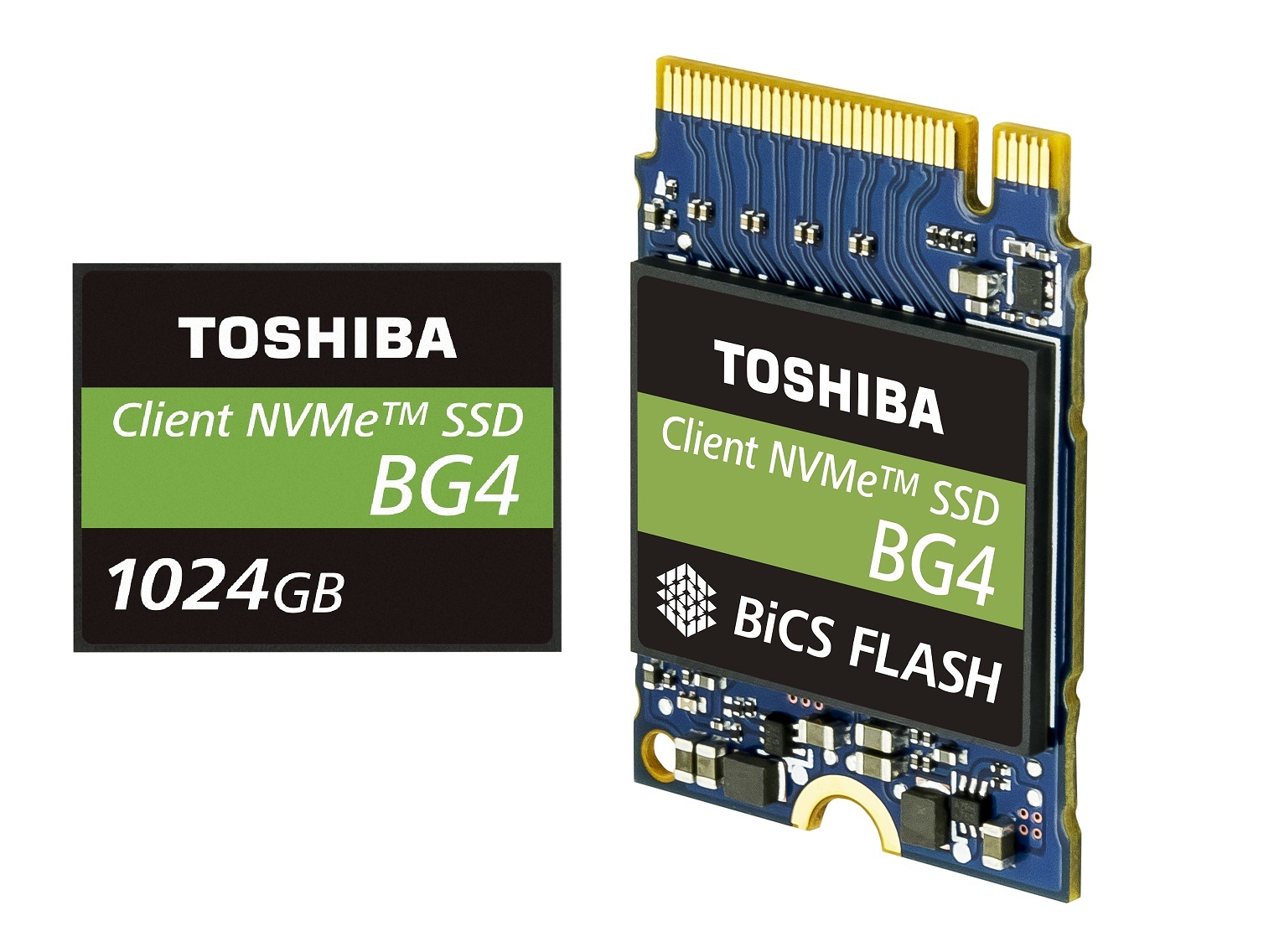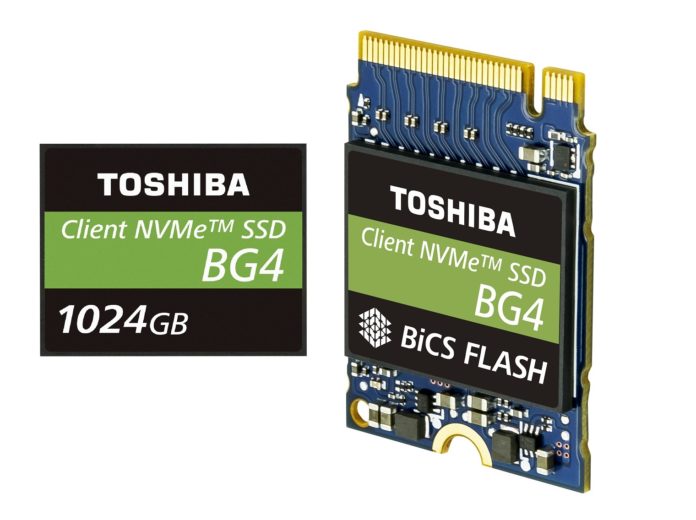Toshiba has demonstrated a 96-layer, QLC (4bits/cell) NVMe SSD for thin notebooks, server booting and embedded systems at CES 2019.
The BG4 (Ball Grid array gen 4) series device use 96-layer 3D NAND technology and has the flash and its controller in a single compact package with a 1.3mm profile. Its predecessor, the BG3, has a 1.5mm profile.

The BG4 has 128GB, 256GB, 512GB and 1TB capacity levels, making it the densest such drive available, and 4 PCIe gen 3 lanes – twice as many as the prior BG3 product.
The BG3 uses 64-layer 3D NAND with TLC (3bit/s cell) technology, giving the BG4 50 per cent more layers and a third more bits/cell.
Sequential read and write performance for the BG4 is up to 2.25GB/sec read – 50 per cent more than the BG3 – and 1.7GB/sec write, a 70 per cent increase. There are up to 380,00 random read IOPS (a 153 per cent jump), and 190,000 write IOPS (90 per cent) better.
The BG4 has lower power needs than the BG3, with up to 20 per cent improvement in reads and seven per cent in writes. This should help extend battery like in notebooks. It uses a host memory buffer, as does the BG3, instead of one on the drive, with protection against DRAM failure.
It is also available in M.2 2230 format and a self-encrypting version is available. The device is sampling to select OEM customers, with general sample availability expected later in the second 2019 quarter. We have no prices or endurance data.








